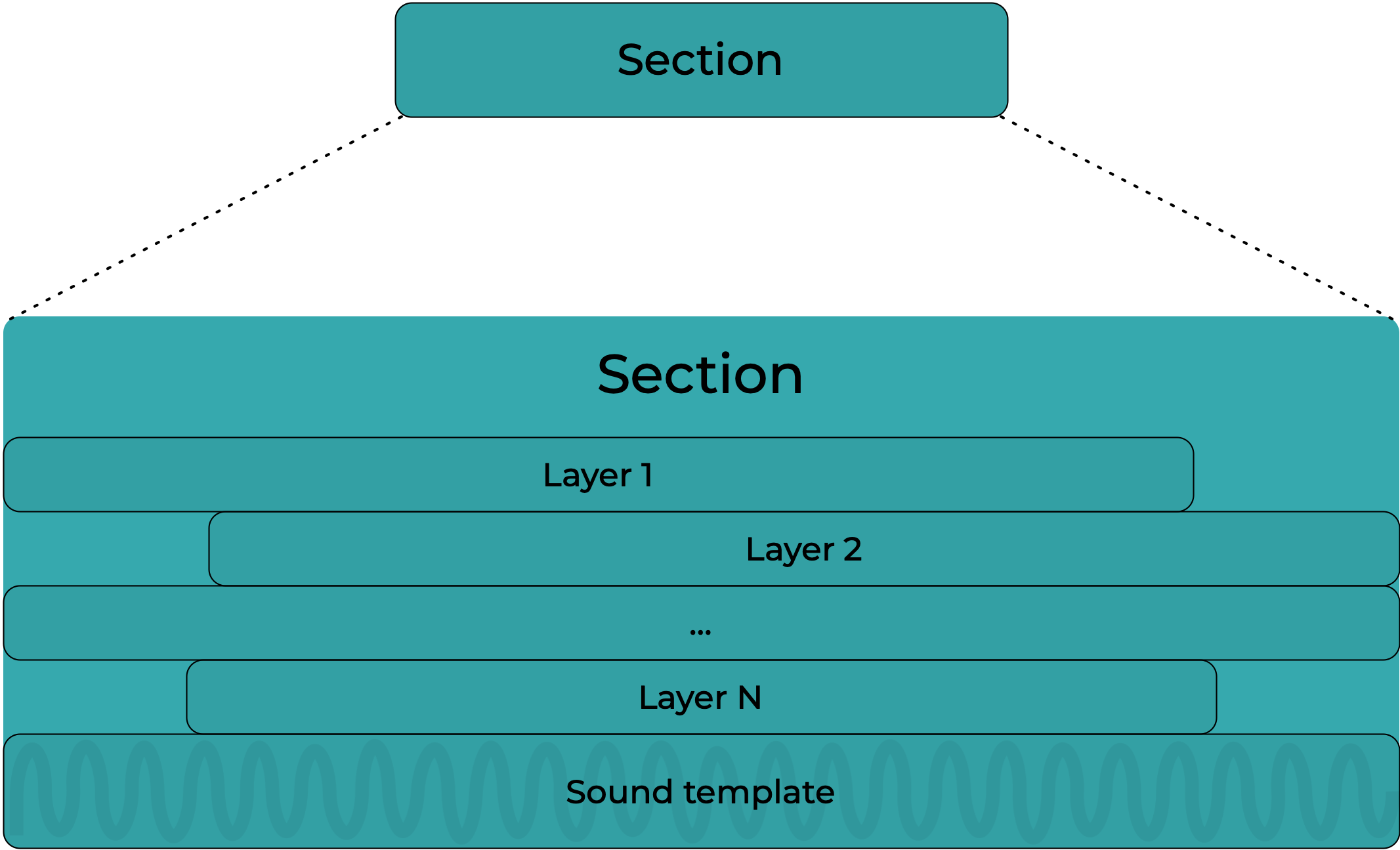Audioform Format
What can audioform do?
Typically one can create a piece of audio like this with audioform:

Import and create assets
Audioform arrange together and mix different kind of elements (called assets). Those are:
- Text-to-speech (a combination of text and a voice from the Voice library)
- Speech-to-speech (a combination of a text recording and a voice from the Voice library)
- Sound effects (a sound from the Sound effect library)
- Sound template, or sound bed (a sound from the Sound template library)
- An audio file from the File library
Arrange
The assets are arranged via an arrangement that lay them out over time and determines the relative position and overlap of the assets.
The arrangement is first divided in consecutive Sections (minimum one):

Each section contains one or more layers playing together. It has an optional sound template (or sound bed) that will play in the background of the section, and will play for the duration of the section:

The Smart Fit feature will fit the sound template perfectly to the section, doing a smart edit of the sound template combining the start and the end of the music in one piece.
Each layer contains contiguous clips. The clips contains one asset.

Timing and duration
The audioform arrangement is designed to be flexible: it can adapt to its content (the assets) but can also have timing constraints such as:
- forcing the duration of a section or a clip
- add a pause (no sound) between two consecutive sections or clips
- align layers with each others
Produce
The arrangement is mixed by our cloud mixing engine.
The engine has knowledge of the asset types and is therefore able to process them differently, irrespective of the layer they are in, so that the result always sounds great.
If you have knowledge of Audio production software (DAWs), do not equate the concept of tracks in a DAW to that of Layers in Audioform as different assets in the same layer could end up in different tracks in our mixing engine. The Arrangement is about timing essentially.
[TODO: link]
Delivery
The mixed result is then further process to fit a specific loudness target (which some broadcast system require) and encoded to a specific format.
[TODO: link]
Updated about 1 month ago
